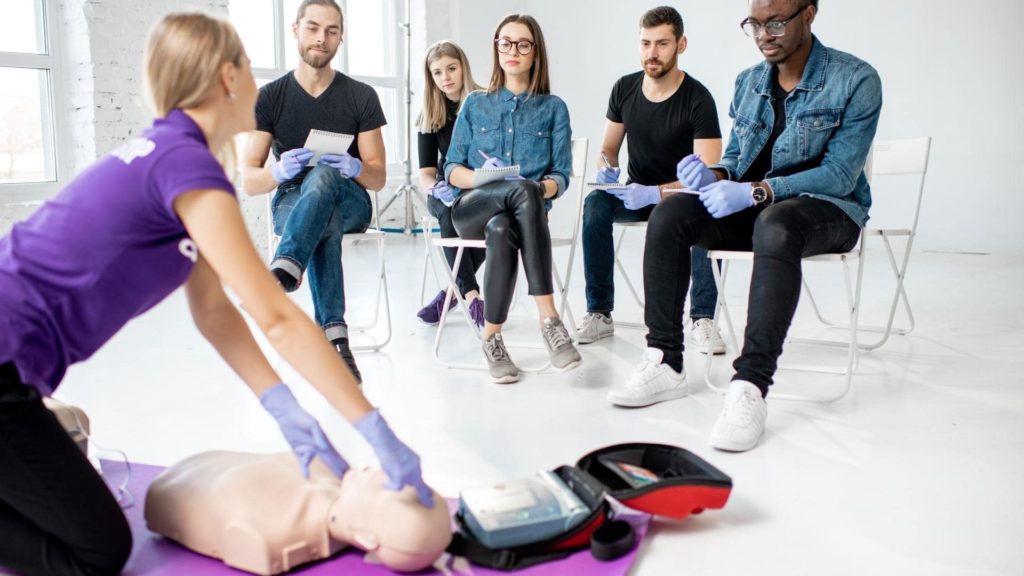CPR is one of the most essential life-saving skills that can help someone survive if they have stopped breathing after cardiac arrest or an accident. However, a lack of knowledge is debilitating during an emergency because it can prove harmful.
In this blog, we will discuss how to know when someone needs CPR. Having the knowledge and skills to understand when and how to perform CPR requires training, and this is what you can expect to learn:
ABCs (Airway, Breathing, Circulation)
When faced with an emergency, it is often hard to tell when CPR is required. Learning the signs is the best way to ensure you act as fast as possible to help save a life. The three main components of first aid training are known as the ABCs.
ABCs stands for airway, breathing, and circulation. Therefore, you need to ensure the person’s airway is open, see if the person is breathing, and, if not, restore their circulation with rescue breaths and chest compressions.
These are the types of guidelines and updates that make it essential to keep your CPR certification updated.
Learn How to Know When Someone Needs CPR
Check, Call, Care
The 3 Cs that everyone must practice during an emergency is check, call, and care. Doing these in the correct order means that you can help preserve life, prevent deterioration, and promote recovery for the person in the accident.
1. Check
Check to see that no dangers are present around the emergency scene to ensure the victim and you are safe. Look for indications of a serious illness or injury, such as being unresponsive, difficulty breathing, or significant bleeding. Examine the individual’s ABCs: Airway, Breathing, and Circulation. The ABCs are a fast assessment that should be completed as soon as possible. Don’t rush in without assistance, and move the victim to a safer place only if necessary. Once the accident scene is secured, check to see if the victim has a pulse and is breathing, or if a bystander is available to call instead.
2. Call
Get help immediately by calling 911. You can help the responders when they arrive by giving them the information you have gathered from the victims at the scene.
3. Care
Once you check and call, you can now provide care as you wait for help from the medical professionals. Monitor the person’s pulse and breathing, stop any bleeding and perform CPR if required. If you do not need to perform CPR, it is ideal to avoid putting a person who is unresponsive or has an altered level of reactivity in a face-up posture because the airway may be blocked by the person’s tongue, saliva, or other bodily fluids. Rolling the individual onto his or her side and into the recovery position can guard against obstruction of the airway. However, if the individual is fully responsive and able to protect his or her own airway, the recovery position is not necessary.
How To Do CPR
When a person’s heartbeat has stopped or is experiencing a cardiac arrest, you must look for signs and symptoms that include a person collapsing, unresponsive with agonal breaths or not breathing. Perform CPR to ensure that their vital organs receive oxygen until help arrives.

CPR on an Adult
There are the CPR instructions for an adult:
- Have a bystander call EMS/9-1-1 and get an AED. If you are alone with an adult, call EMS/9-1-1 yourself, get an AED, and then return to care for the person.
- Lay the person on their back on a firm surface.
- With the heel of your hand placed at the center of the person’s chest, place your other free hand on top with your fingers interlaced.
- Keep your shoulders directly above your hands and your arms straight.
- Use your body to deliver chest compressions of 2 inches at a quick and steady rate of 100-120 compressions per minute.
- Open the airway. This is done by tilting the victim’s head back and keeping their chin up after 30 compressions.
- Seal the person’s mouth entirely with yours when using a plastic face shield and pinch their nostrils shut as you blow two rescue breaths into their mouth. Make sure the person’s chest rises with each breath; otherwise, recheck the airway.
- Place the plastic face shield over the person’s mouth and pinch the nostrils as you blow two rescue breaths into their mouth. Make sure the person’s chest rises with each breath; otherwise, recheck the airway.
- Repeat two rescue breaths for every 30 chest compressions until help arrives.
CPR on a Child
The steps for performing CPR on a child are similar to those for adults. The cycles include 30 chest compressions in 15 to 18 seconds and two rescue breaths. The minimum chest compression rate is 100 to 120 beats per minute.
CPR on an Infant
Only use two fingers when delivering chest compressions for CPR to an infant CPR. The chest compressions should only reach 1.5 inches. Perform the rescue breaths like this:
- Form a complete seal using a plastic face shield by placing your mouth over the infant’s nose and mouth.
- Breathe with gentle puffs into the infant’s mouth.
Where Can I Learn CPR?
CPR training and certification will ensure you can perform it on victims of a sudden cardiac arrest, near drowning, electrocution, sudden collapse, and car accidents. Coast2Coast’s First Aid & CPR courses provide you with the correct understanding of how to know when someone needs CPR. The CPR courses at Coast2Coast include two levels of stand-alone CPR: Level A and Level C.
CPR training forms part of all Coast2Coast’s First Aid training courses. For healthcare professionals, Basic Life Support provides a higher level of CPR training for fast-paced medical environments.
Join a Coast2Coast CPR class that suits your needs in several areas around the Greater Toronto Area, Eastern and Western Ontario today. Always remember to take the appropriate level of CPR training that you require for your work or lifestyle.





















